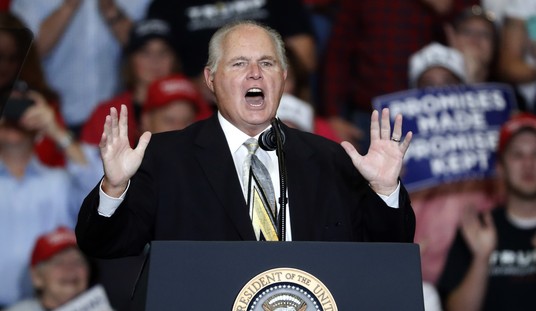Two years ago, I wrote a piece for Pajamas Media that ended with this:
Tax the relatively few rich; you still can’t tax them more than 100 percent, and if spending grows faster than GDP, it will eventually overwhelm whatever taxes you can levy. Tax the many poor, and you get the same result — except you’ll be voted out of office first, because there are a lot more poor people than rich people. And it still won’t matter, because you cannot make revenues grow faster than the economy forever.
So the real bad news is that this is a mathematical fact: over the long term, government spending cannot grow faster than GDP forever.
In my 2008 article, I showed that we can absorb almost any one-time increase in spending if only we preserve one simple rule: the rate of spending increase in constant dollars has to be less than the rate of growth in GDP.
In the intervening years, we’ve seen the consequences of electing both a Congress and an executive who have ignored this. The result is shown in a chart that’s been all over the web; it originally came from the Heritage Foundation and is reproduced here:
The Obama administration has, with the stimulus plan, introduced a one-time massive expenditure and then followed it with rapidly growing expenditures with the health care plan. When we put those together, according to the CBO, we get a new chart, like this (linked from Greg Mankiw’s blog because the CBO chart is in an annoying slide show):
Now, squint just a little bit, so you can ignore the (rather frightening) numbers, and just look at the two colorful ribbons. The blue ribbon is tax receipts; the green ribbon is expenditures — in both cases, actual up to 2010, and estimated from then on.
You see the expenditures grow dramatically and receipts drop, between 2008 and today: that’s the effect of the recession, stimulus, Fannie and Freddie, and auto industry bailouts. Then, for a short while, receipts grow rapidly while expenditures drop, but by 2015 the expenditures are growing at least as fast as receipts. Longer-term projections show the same thing: expenditures growing much faster than receipts.
This way lies ruin, as Greece is demonstrating today.
All of this really is just an extended argument to make the point the tea parties have been making for more than a year: it’s the spending, stupid!
Unhappily, simply looking at spending isn’t enough, either. Even if health care “reform” were repealed, there are existing entitlement programs that will continue to cost more, and the problems with increasing Social Security and Medicare costs won’t go away simply because we decide to not spend as much. Cut them back far enough, and people who thought their FICA “contributions” were buying them a pension will be falling back on their kids or begging on street corners. Long before that happens, the politicians who proposed the changes will themselves be out of work.
The answer is to go back to that one mathematical law: the rate of government spending growth must be less than the rate of growth in GDP. Except, let’s restate it with the inequality reversed:
The solution to the budgetary problem is that the rate of GDP growth must exceed the rate of growth of spending.
So, if spending can’t be completely contained — and it looks really difficult to do — then we have only one other solution. The economy has to grow faster.
This is assumed, but not really stated outright, in some of the Republican proposals. There’s always some lip service paid to the need to have a growing economy; the problem is we always talk about cutting taxes as a good in itself. But cutting taxes is a means, not an end. Cut taxes to zero, with the economy stagnant, and deficits simply increase radically.
So what can we do? The answer is to do the things that cause the economy to grow more rapidly, and that means increasing productivity — the amount of “stuff” you get per worker per year.
The usual way productivity increases is by investment: someone invests in building widgets more cheaply, and productivity goes up. There’s more to go around, GDP grows, and tax receipts grow.
What’s more important is that the standard of living grows. Think about the last 50 years: when I was a child, I still knew people who didn’t have indoor plumbing. Many adults today don’t remember a time when television was black and white. Kids born today will (we hope) never know a time when high-definition color television didn’t come in an square box the size of a magazine (if they remember what a “magazine” was).
Increase the rate of growth of the economy, increase gains in productivity, and everyone benefits. Sure, the rich get richer, but the poor get indoor plumbing, cell phones, and HD TV.
The solution to the fiscal problems with which we’re all faced is to readjust the tax rules, accounting rules, and other regulations so that productivity increases more quickly. An economic proposal that specifically targets faster growing productivity and thus a faster growing GDP, along with spending restraint, will let us grow our way out of the current fiscal crisis.
As a side effect, we’ll all be richer and happier.












Join the conversation as a VIP Member